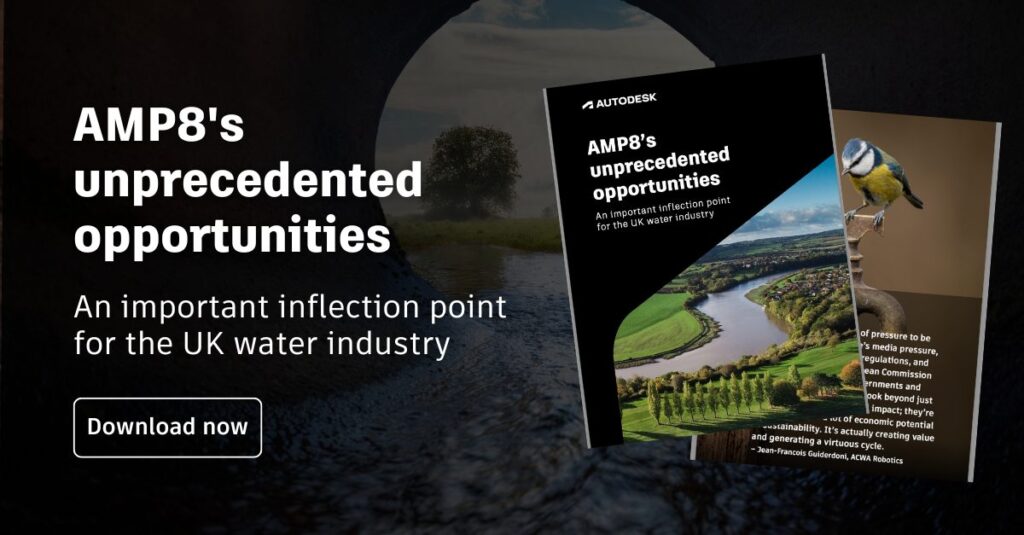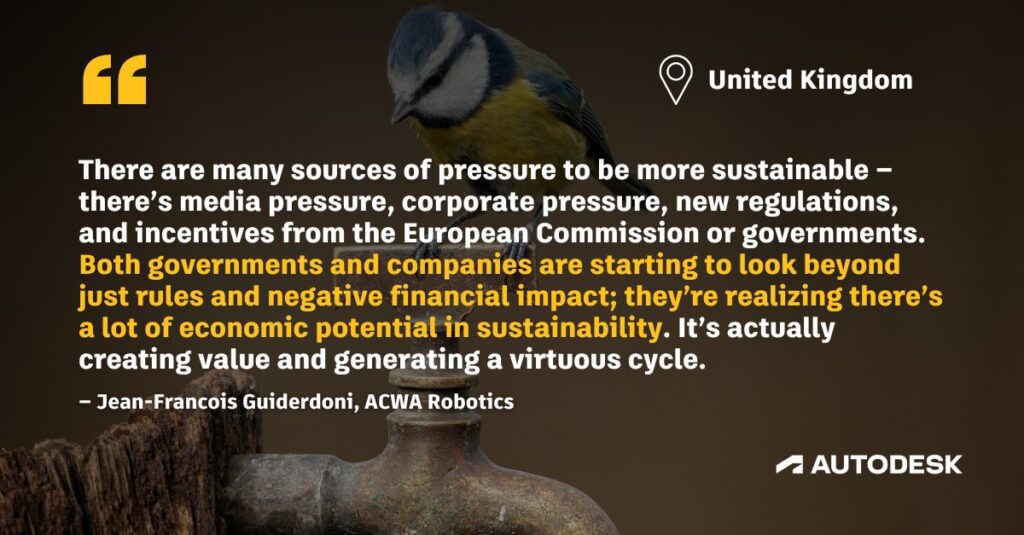One of the most important things UK water regulator Ofwat wants to see water companies use AMP8 funding to achieve is elevating the importance of Biodiversity Net Gain (BNG). We wrote about it in our latest white paper ‘AMP8’s unprecedented opportunities’, part of which we’re excerpting here.

A change that makes society better is one we can all be proud of
According to the UK government, developers must now deliver a minimum Biodiversity Net Gain (BNG) of 10%. This means a development should result in more or better-quality natural habitat than existed before development began.
There are essentially three ways a developer can achieve 10% BNG:
- Enhance and restore biodiversity directly on-site, or optionally on other land they own.
- Pursue a mix: on-site biodiversity improvements plus off-site Biodiversity Units purchased from a land manager.
- As a last resort, buy statutory biodiversity credits from the government, the proceeds of which go to habitat creation across England.
While some developers may initially see BNG requirements as a burden, they are a means to a very positive end. They improve a development so that it works in closer harmony with the environment, which can be a very strong selling point for a development scheme.
The best way to satisfy this requirement is to make SuDS a regular and essential part of your on-site project planning. When you’re able to offer stakeholders multiple SuDS options to satisfy BNG requirements, you open the door to compromise for stakeholders, who may, in fact, welcome the opportunity to do things differently. This is ultimately what regulators want: a more thoughtful approach that does not apply the same decision-making calculus for every project, and which balances financial concerns with environmental goals.

Drainage design: SuDS is the future
We have been focused on building SuDS features into InfoDrainage for many years, with the belief that nature-based solutions would become an increasingly essential and necessary approach to site design and development. We’re confident that we’ve built the leading industry approach to designing SuDS-based landscapes, and we encourage our existing customers to dive deeply into these opportunities by utilising the many SuDS options inside InfoDrainage.

We want to make it easier for water professionals to incorporate nature-based design by offering a 30-day free trial of InfoDrainage. If you’re an existing Microdrainage user, we have lots of reasons why you should upgrade and plenty of resources to help you upgrade to the latest technology. If you are completely new to SuDS, we even have an excellent introductory video: Understanding SuDS Design.

The problem with relying solely on offsets
In addition to AMP8’s heavy focus on digitalisation and CSOs, we must not forget the promises and goals of AMP7, which focused on Net Zero goals and leaned heavily into carbon offsets to kick-start industry momentum. While they have a place in any water company strategy, relying solely on carbon offsets could become a hindrance to future societal progress:
- Prioritising the reduction of greenhouse-gas emissions is central to the achievement of Net Zero, particularly since the scale of emissions reductions needed to achieve Net Zero is greater than the offsets available.
- A reliance on offsets can hinder innovation and the growth of a circular economy by allowing poor and inefficient practices to persist, distracting from the long-term solutions needed to reduce emissions.
- The government wants to encourage sound investment decisions and steer companies to focus on process changes and technological innovation to address emissions problems. Allowing poorly substantiated offsets risks undermining this goal.
In the past, the construction industry has usually gone straight to pouring concrete, but it’s becoming increasingly clear that nature-based solutions can be an important bridge to the future of our built environments. They don’t just satisfy legal requirements and encourage more future-forward ways of building, they can solve some drainage problems in remarkably simple, sustainable, and easy-to-understand ways.

Perhaps most importantly, the world seems to have finally woken up to the realisation that more SuDS makes the liveable landscape better for citizens by adding greenery and putting more emphasis on the human aspect of built spaces. If you believe in SuDS, now is not just the time to be vocal about it, but to potentially get rewarded for your advocacy.
Sustainability is a bigger trend than most realise
One last point about the importance of sustainability: Water companies who resist sustainability initiatives may find themselves losing significant ground to competitors in the water industry when it comes to attracting the next generation of water workers.

Autodesk’s most recent 2024 Design & Make report surveys water professionals, along with a broad swath of other infrastructure workers. This yearly report is designed to identify trends, and this year’s survey results makes one thing abundantly clear: “pride in the work that we do” is one of the most important aspects around sustainability for employers.
These are perhaps the most important trends that HR departments should pay attention to as they plan for the future.
Want to learn more? Read the full report.